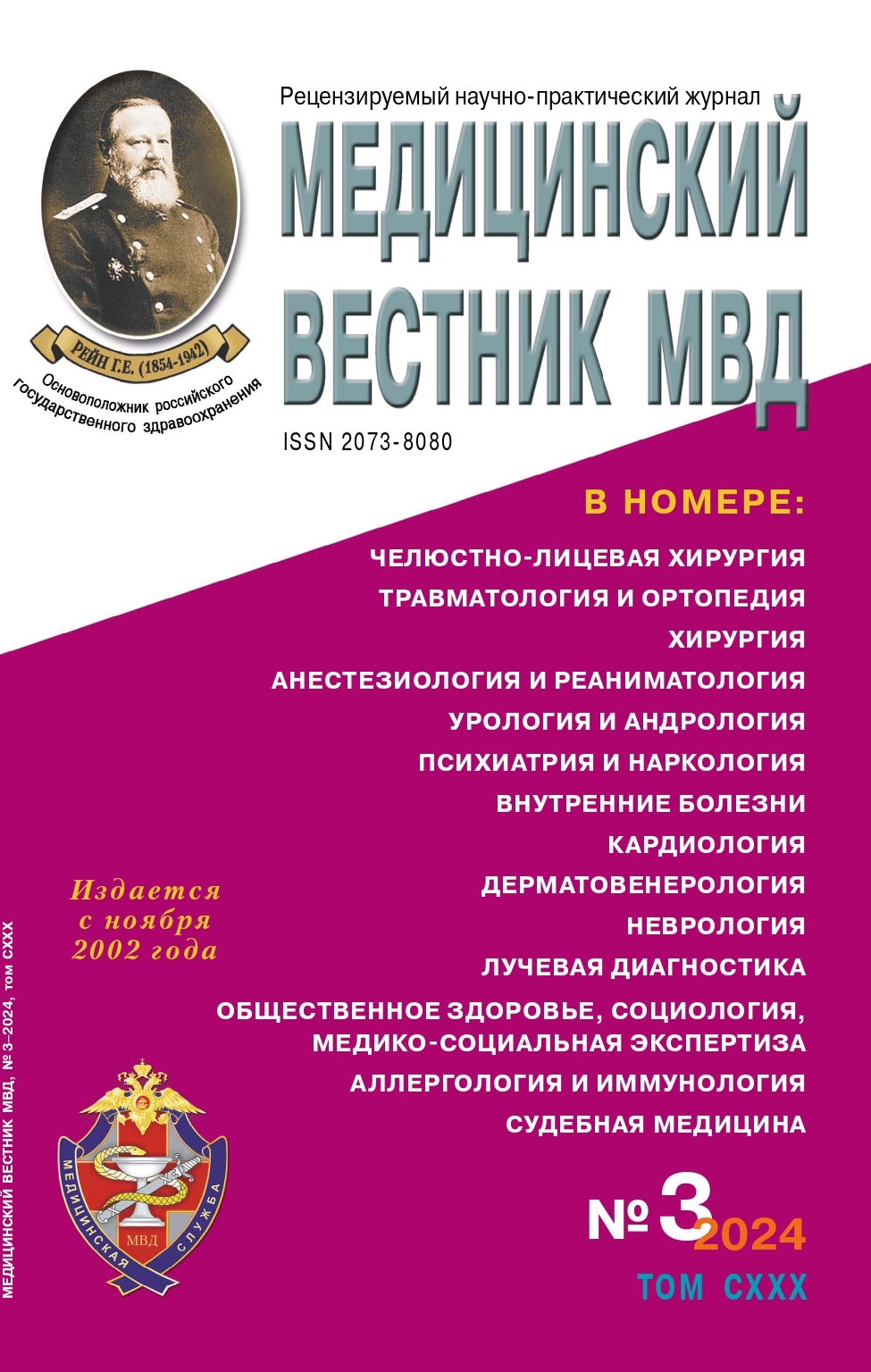Russian Federation
Russian Federation
Russian Federation
This article analyzes available information on risk factors for repeated disorders of cerebral circulation and evaluates importance of each of them in the development of this pathology.
repeated disorders of cerebral circulation, risk factors
1. Mohan K.M., Wolfe C.D.A., Rudd A.G. et al. Risk and cumulative risk of stroke recurrence: a systematic review and meta-analysis // Stroke. – 2011 May; 42(5):1489–94.
2. Edwards J.D., Kapral M.K., Fang J., Swartz R.H. Longterm morbidity and mortality in patients without early complications after stroke or transient ischemic attack. Can Med Assoc J. – 2017; 189: 954–961.
3. Stahovskaya L.V., Klochihina O.A., Bogatyreva M.D., Prusakova O.S. Analiz epidemiologicheskih pokazateley povtornyh insul'tov v regionah Rossiyskoy Federacii (po itogam territorial'no-populyacionnogo registra 2009–2014 gg. // Consilium Medicum. – 2016; 18(9): 8–11.
4. Kernan W.N., Ovbiagele B., Black H.R. et al. Guidelines for the prevention of stroke in patients with stroke and transient ischemic attack // Stroke. – 2014; 45 (7): 2160–2236.
5. Asberg S., Henriksson K.M., Farahmand B. et al. Ischemic stroke and secondary prevention in clinical practice // Stroke. – 2010; 41:1338–42.
6. Guidelines for the Primary Prevention of Stroke. A Statement for Healthcare Professionals From the American Heart Association / American Stroke Association // Stroke. – 2014; 45.
7. Lackland D.T., Roccella E.J., Deutsch A.F. et al. Factors influencing the decline in stroke mortality: a statement from the American Heart Association / American Stroke Association // Stroke. – 2014; 45(1): 315–353.
8. Sørensen M., Lühdorf P., Ketzel M. et al. Combined effects of road traffic noise and ambient air pollution in relation to risk for stroke? Environmental Research. – 2014; 133: 49–55.
9. Starodubceva O.S., Begicheva S.V., Shirokov V.A., Osinkin G.A. Hronopatologicheskie aspekty epidemiologii insul'ta v usloviyah promyshlennogo centra // Ural'skiy medicinskiy zhurnal. – 2017; 1 (145): 21–25.
10. Kachemaeva O.V., Borisova N.A., Abdrahmanova E.R. Vliyanie okruzhayuschey sredy na epidemiologicheskie harakteristiki insul'ta // Zhurnal nevrologii i psihiatrii im. S.S. Korsakova. Insul't: prilozhenie. – 2007: 206.
11. Ji R., Schwamm L.H., Pervez M.A., Singhal A.B. Ischemic stroke and transient ischemic attack in young adults: risk factors, diagnostic yield, neuroimaging and thrombolysis. JAMA Neurol. – 2013 Jan; 70 (1): 51–7.
12. Jensen M., Thomalla G. Causes and secondary prevention of acute ischemic stroke in adults. Hamostaseologie. – 2020; 40 (1): 22–30.
13. O’Donnell M.J., Chin S.L., Rangarajan S. et al. Global and regional effects of potentially modifiable risk factors associated with acute stroke in 32 countries (INTERSTROKE): A case-control study // Lancet. – 2016; 388: 761–775.
14. Fuentes B., Ntaios G., Putaala J. et al. European Stroke Organisation (ESO) guidelines on glycaemia management in acute stroke // European Stroke Journal. – 2018; 3(1): 5–21. 15. Rapsomaniki E., Timmis A., George J. et al. Blood pressure and incidence of twelve cardiovascular diseases: Lifetime risks, healthy life-years lost, and age-specific associations in 1.25 million people // Lancet. – 2014; 383: 1899–1911.
15. Mihaylova B., Emberson J., Blackwell L. et al. The effects of lowering LDL cholesterol with statin therapy in people at low risk of vascular disease: meta-analysis of individual data from 27 randomised trials // Lancet. – 2012; 380: 581–590.
16. Diener H.C., Sacco R.L., Yusuf S. et al. Effects of aspirin plus extended-release dipyridamole versus clopidogrel and telmisartan on disability and cognitive function after recurrent stroke in patients with ischaemic stroke in the prevention regimen for effectively avoiding second strokes (profess) trial: A double-blind, active and placebo-controlled study // Lancet Neurol. – 2008; 7: 875–884.
17. Palnum R.H., Mehnert F., Andersen G. et al. Use of secondary medical prophylaxis and clinical outcome among patients with ischemic stroke. A nationwide follow-up study // Stroke. – 2012; 43: 802–7.





